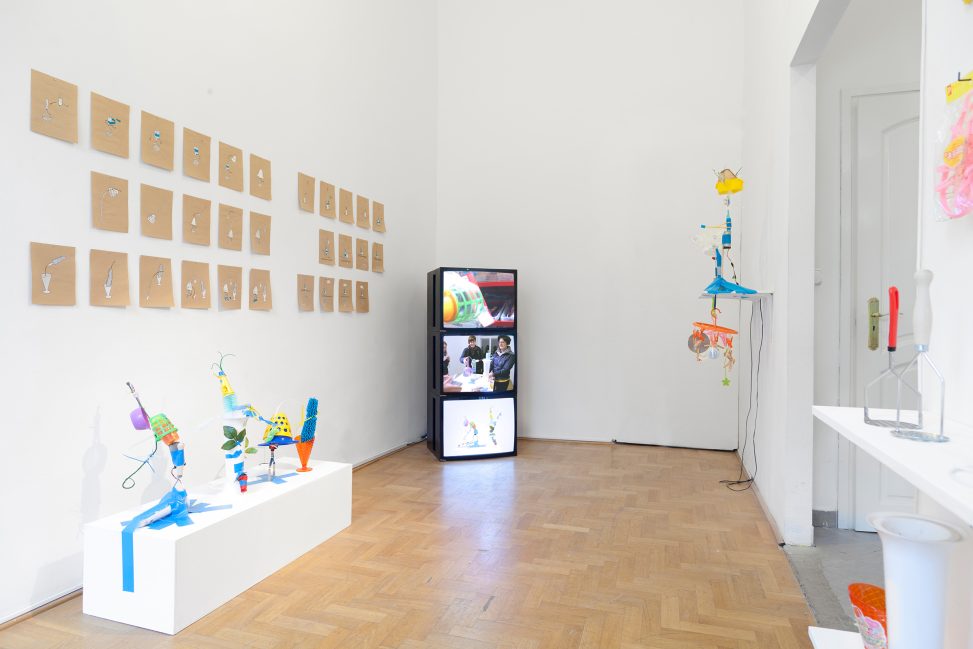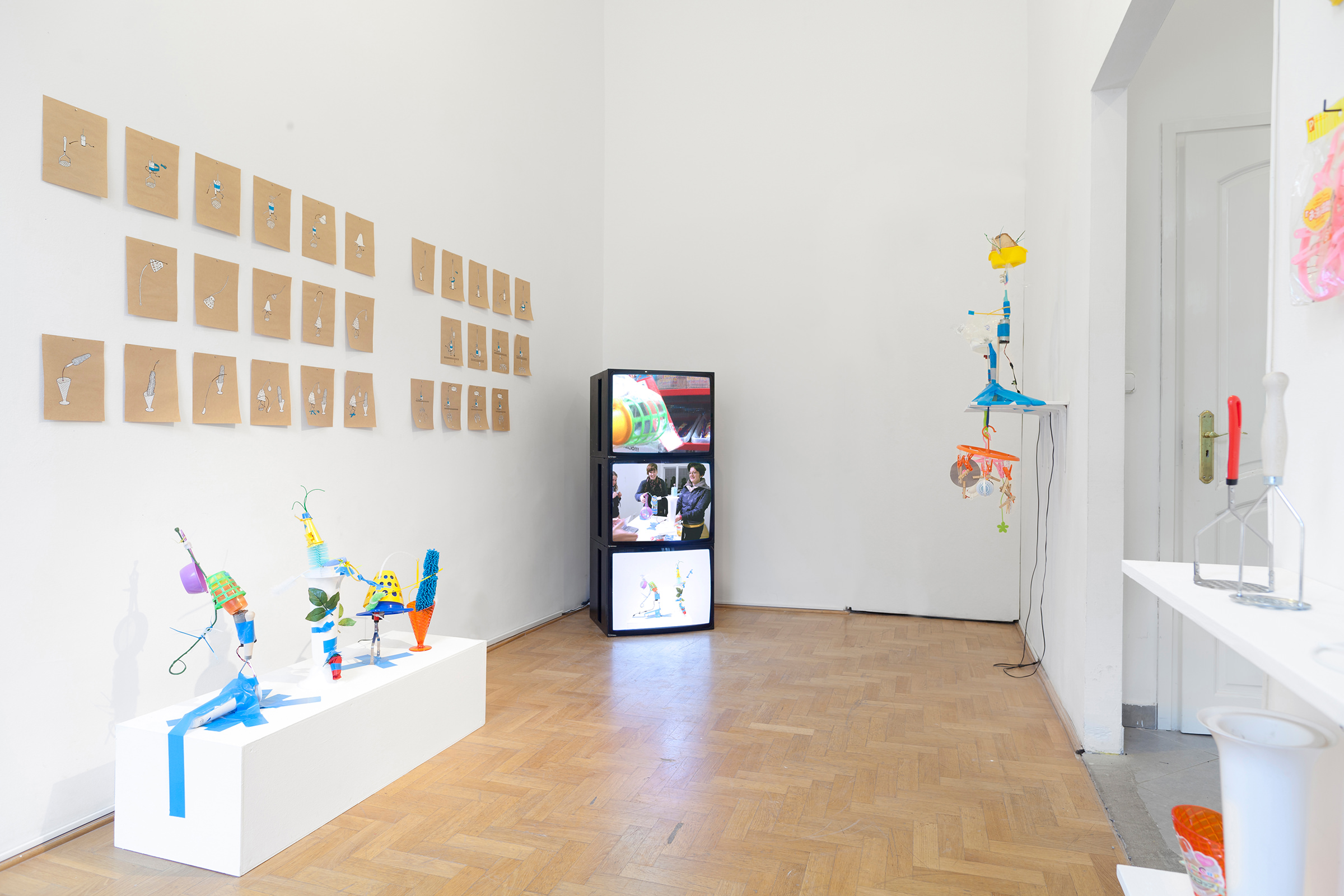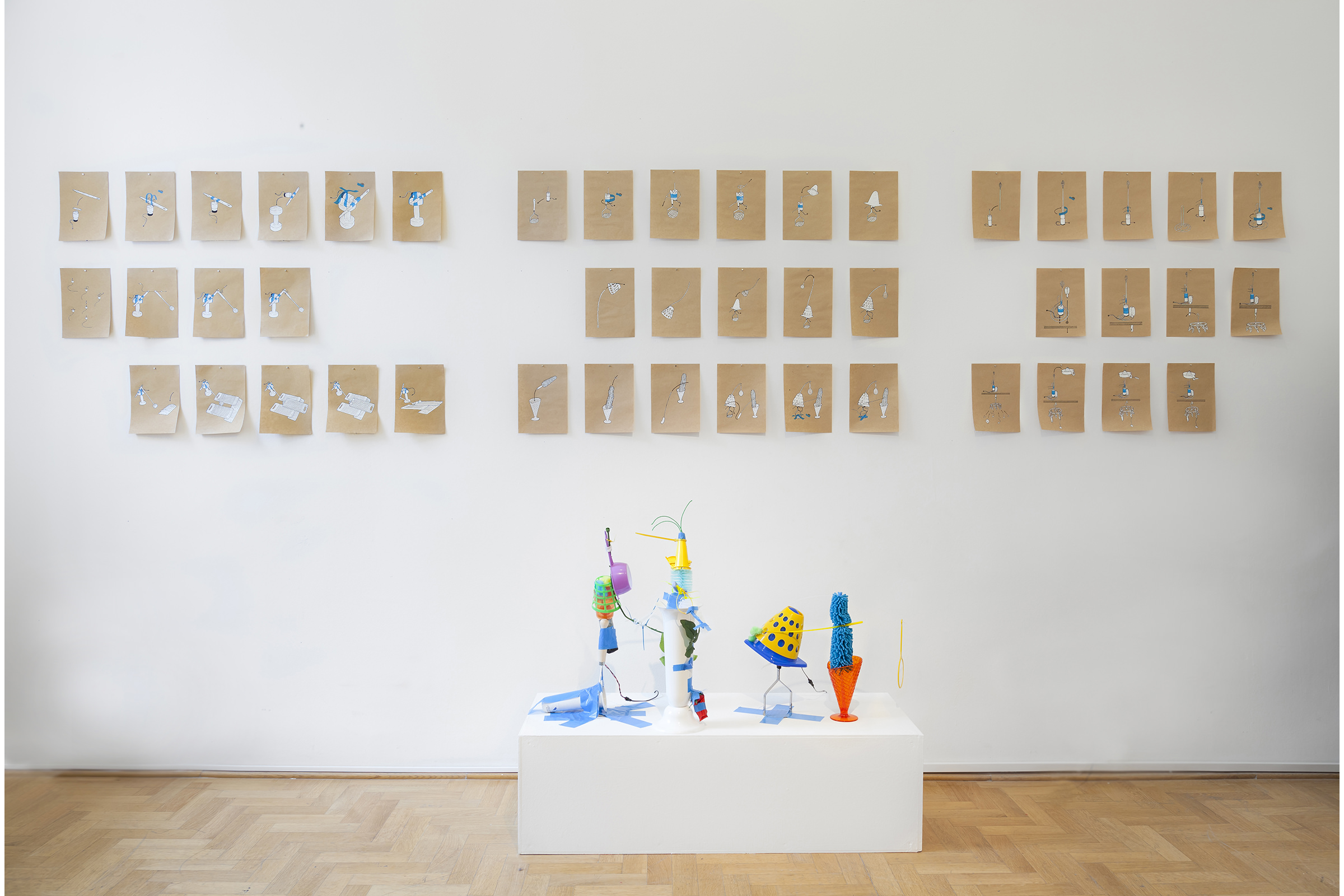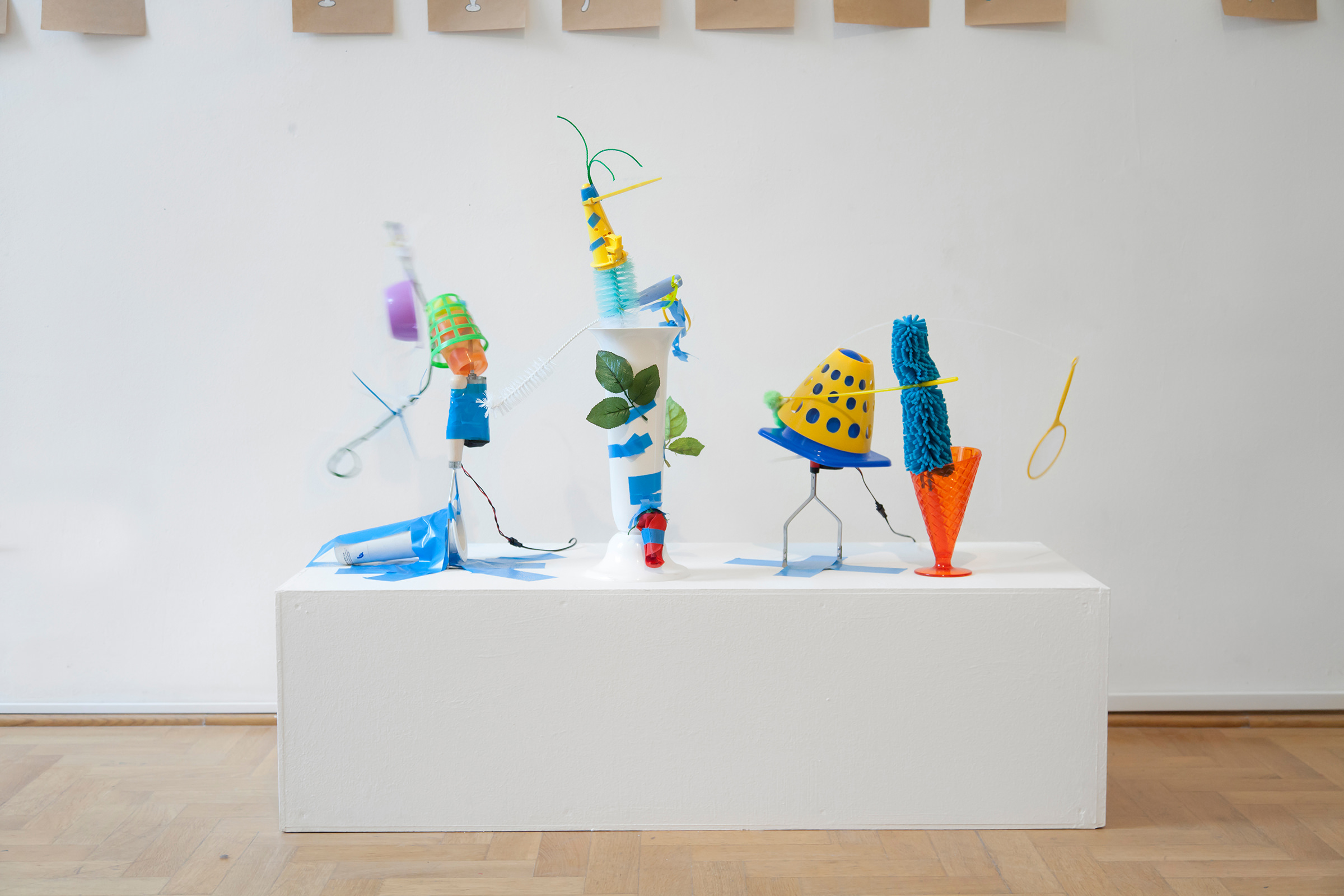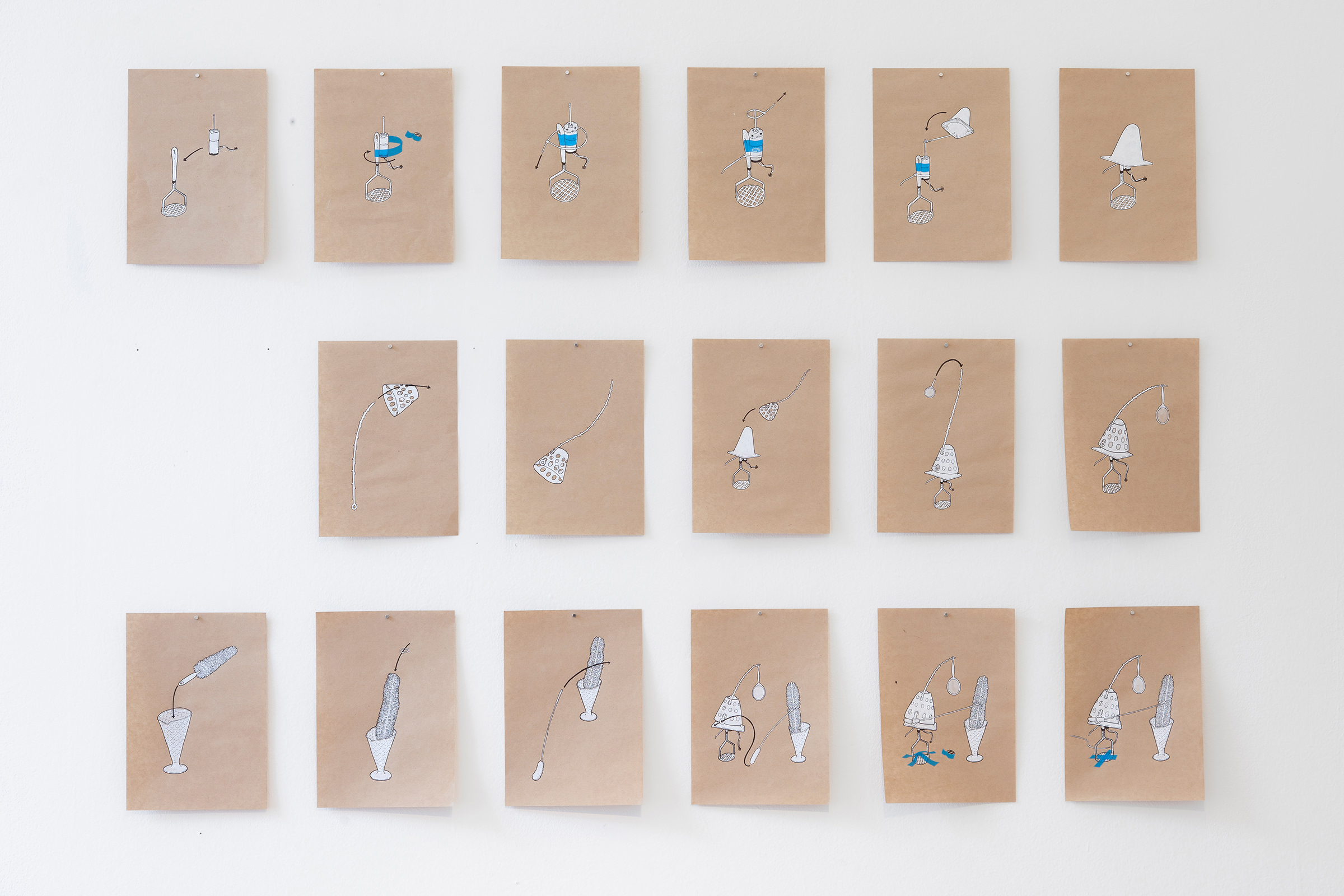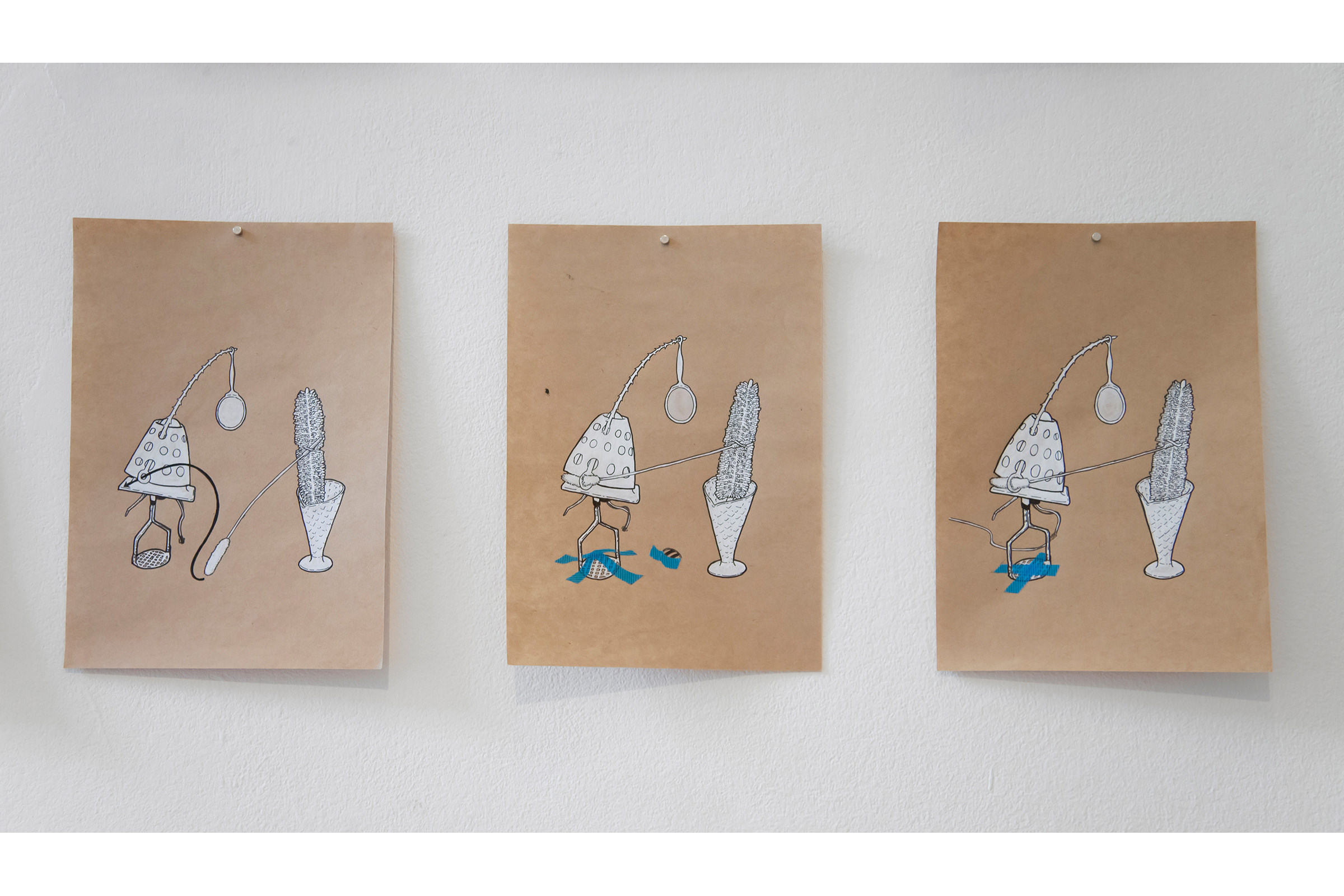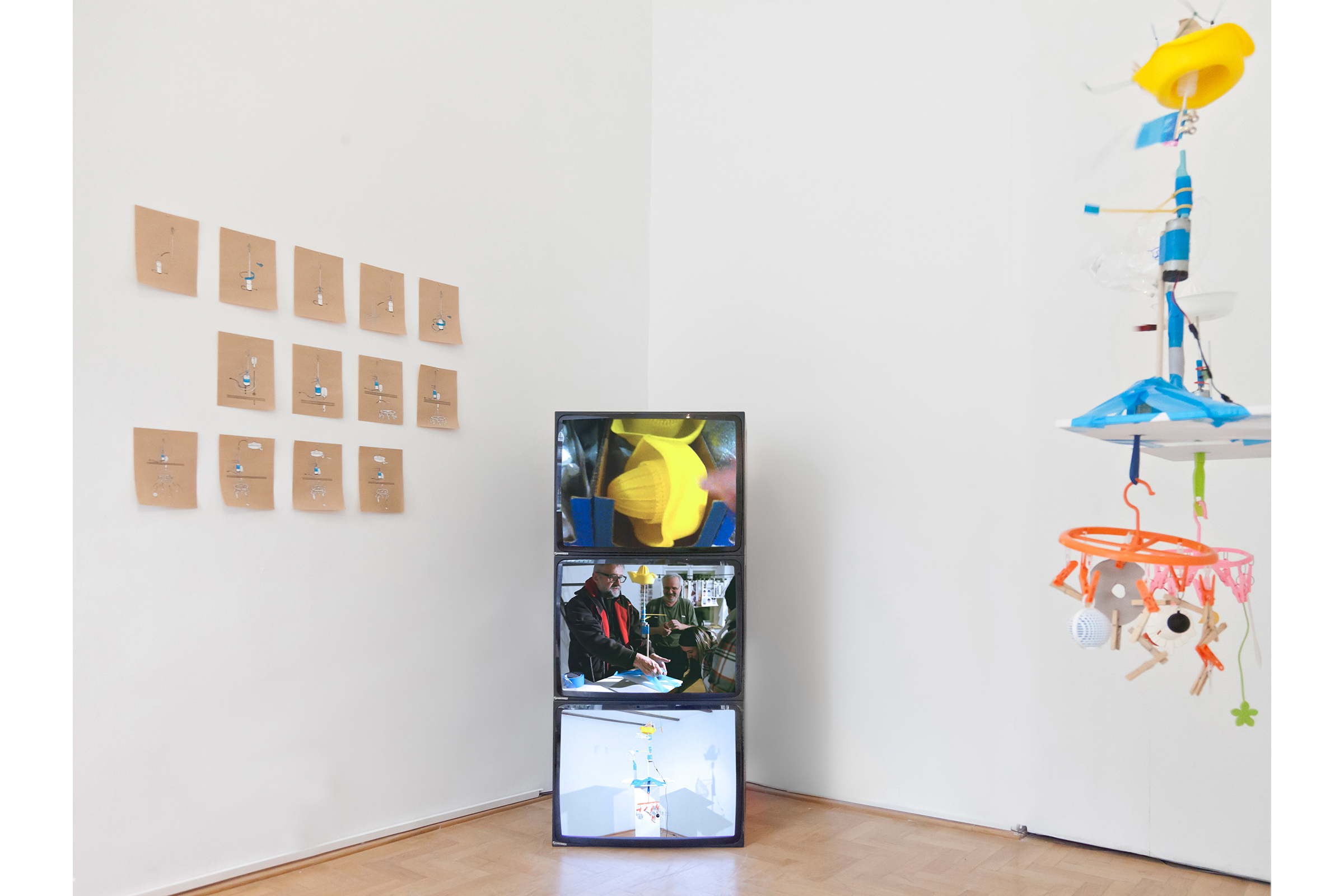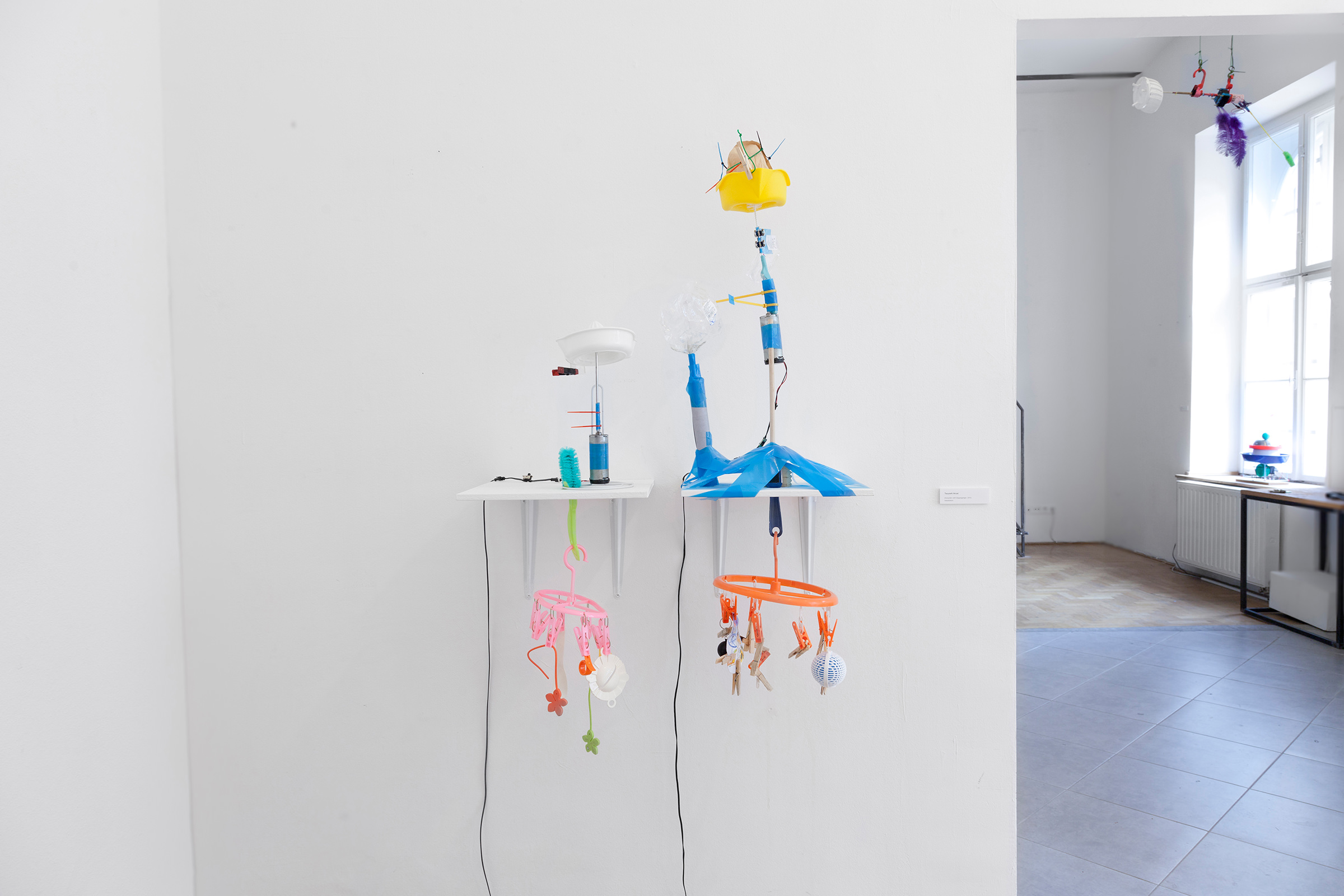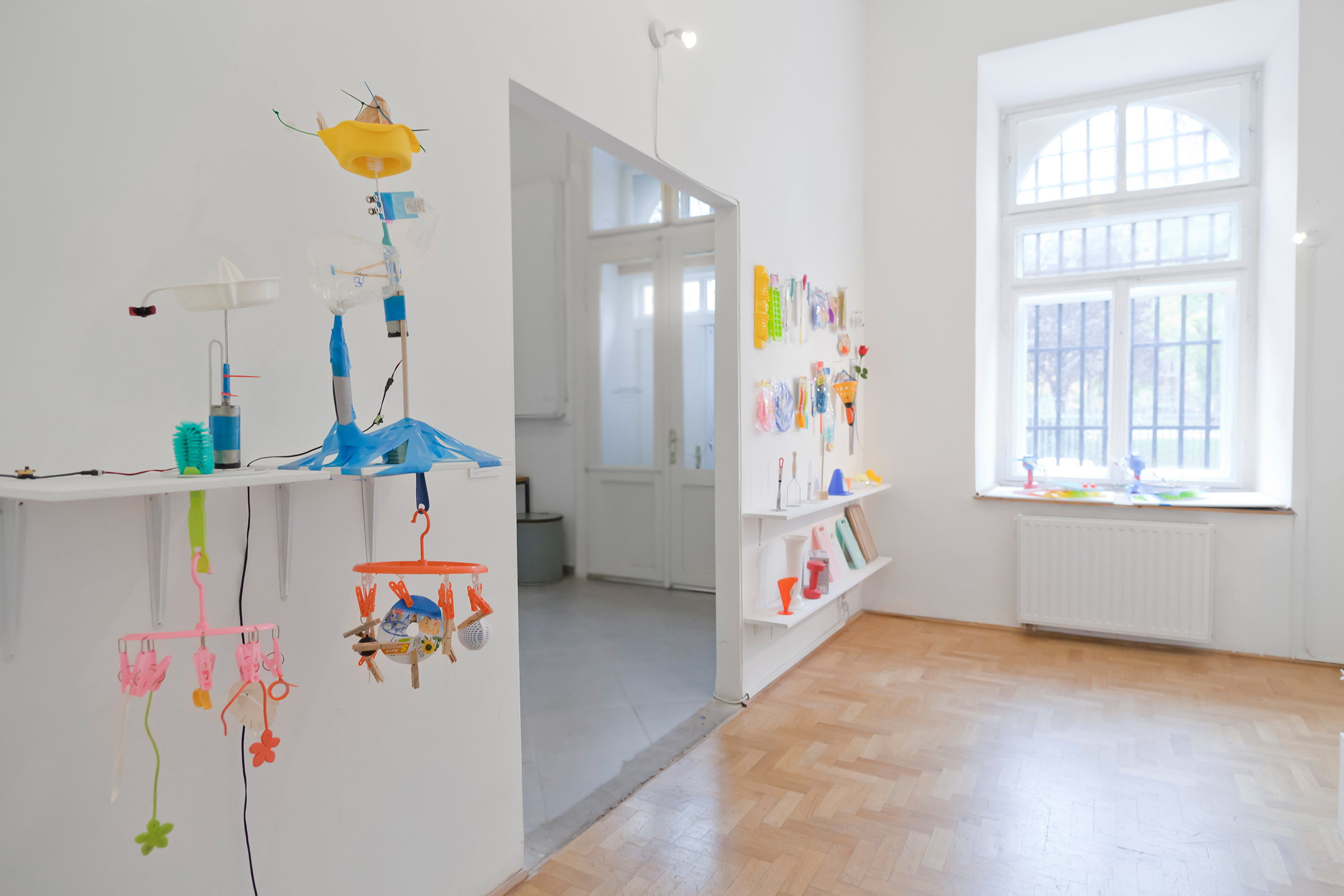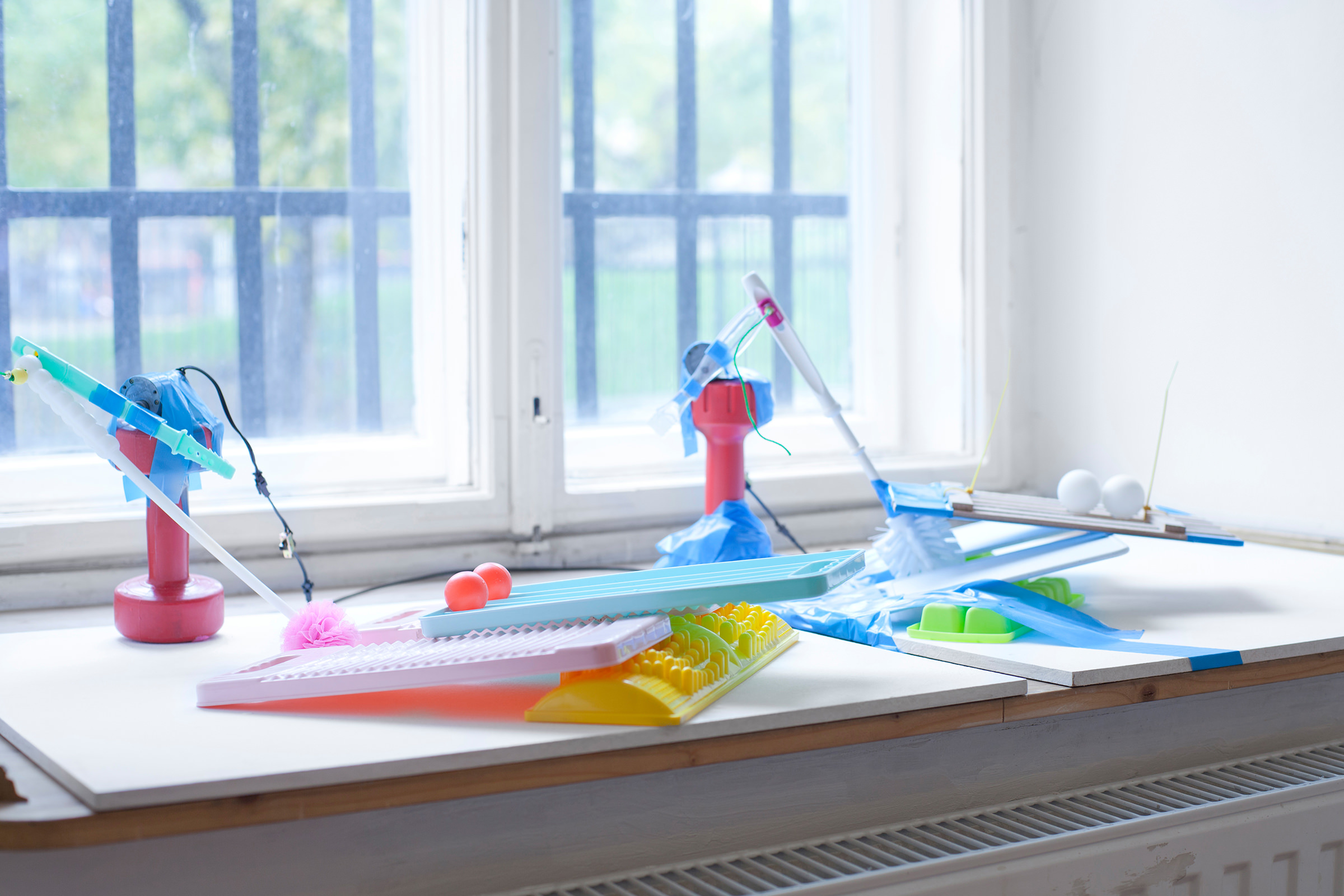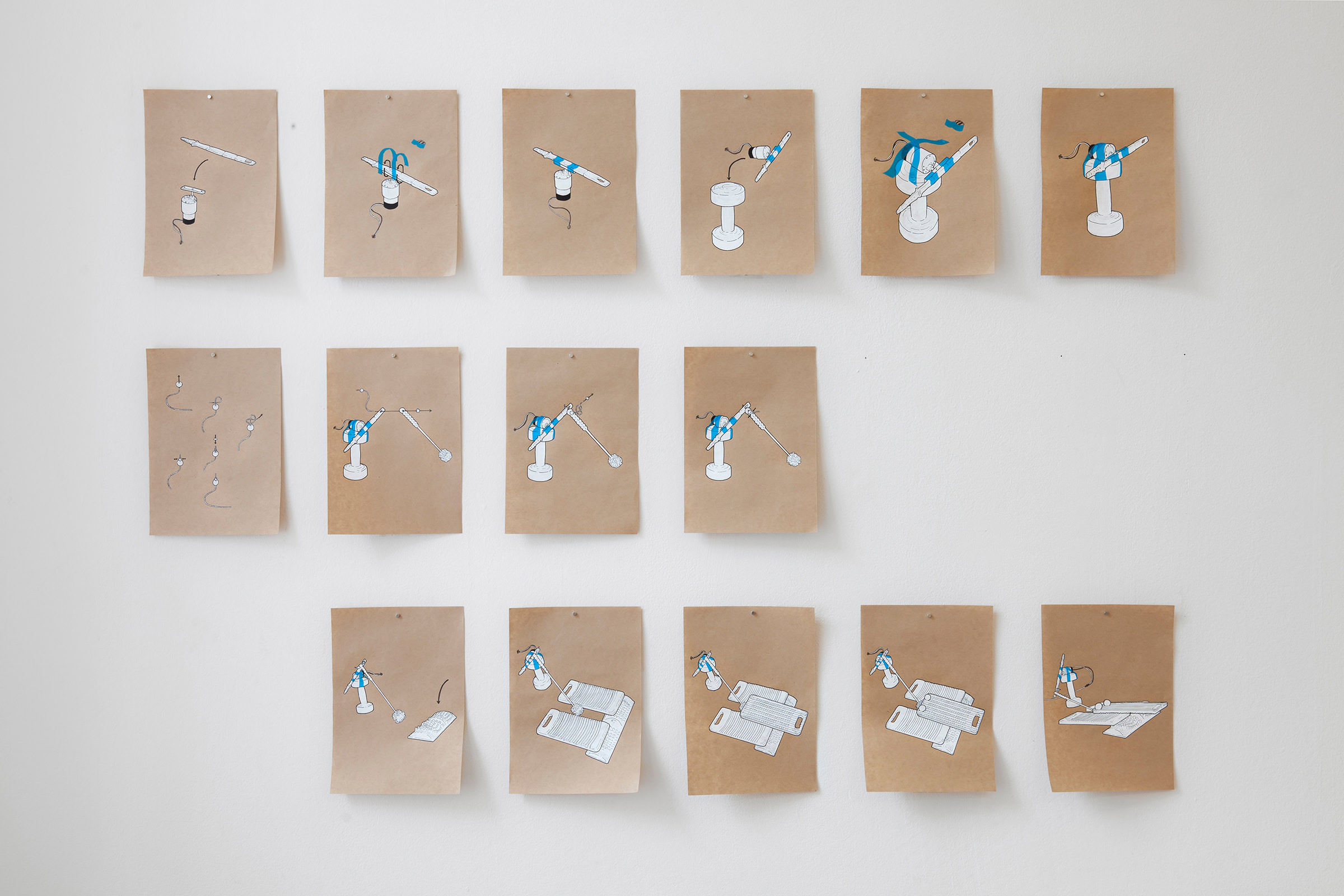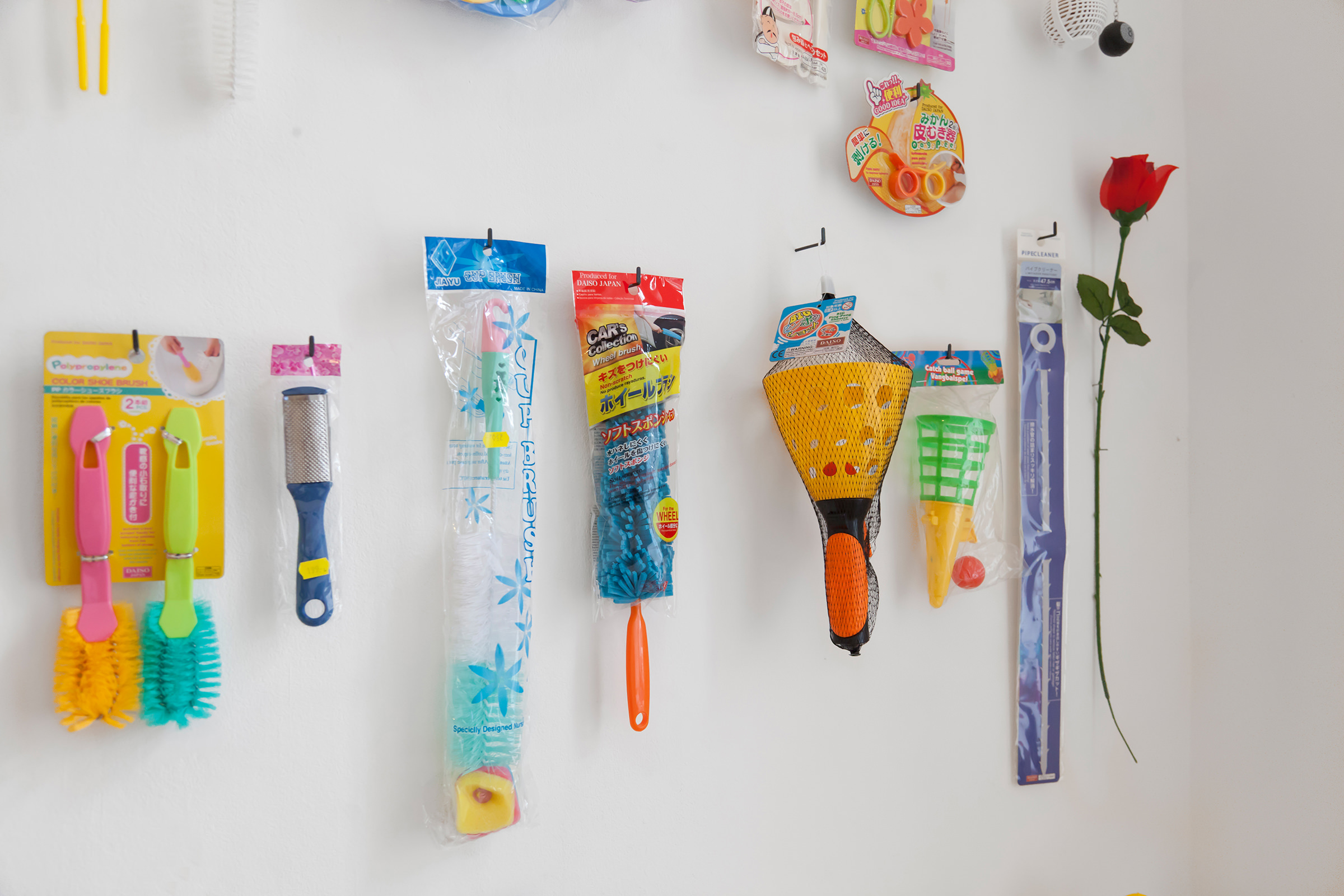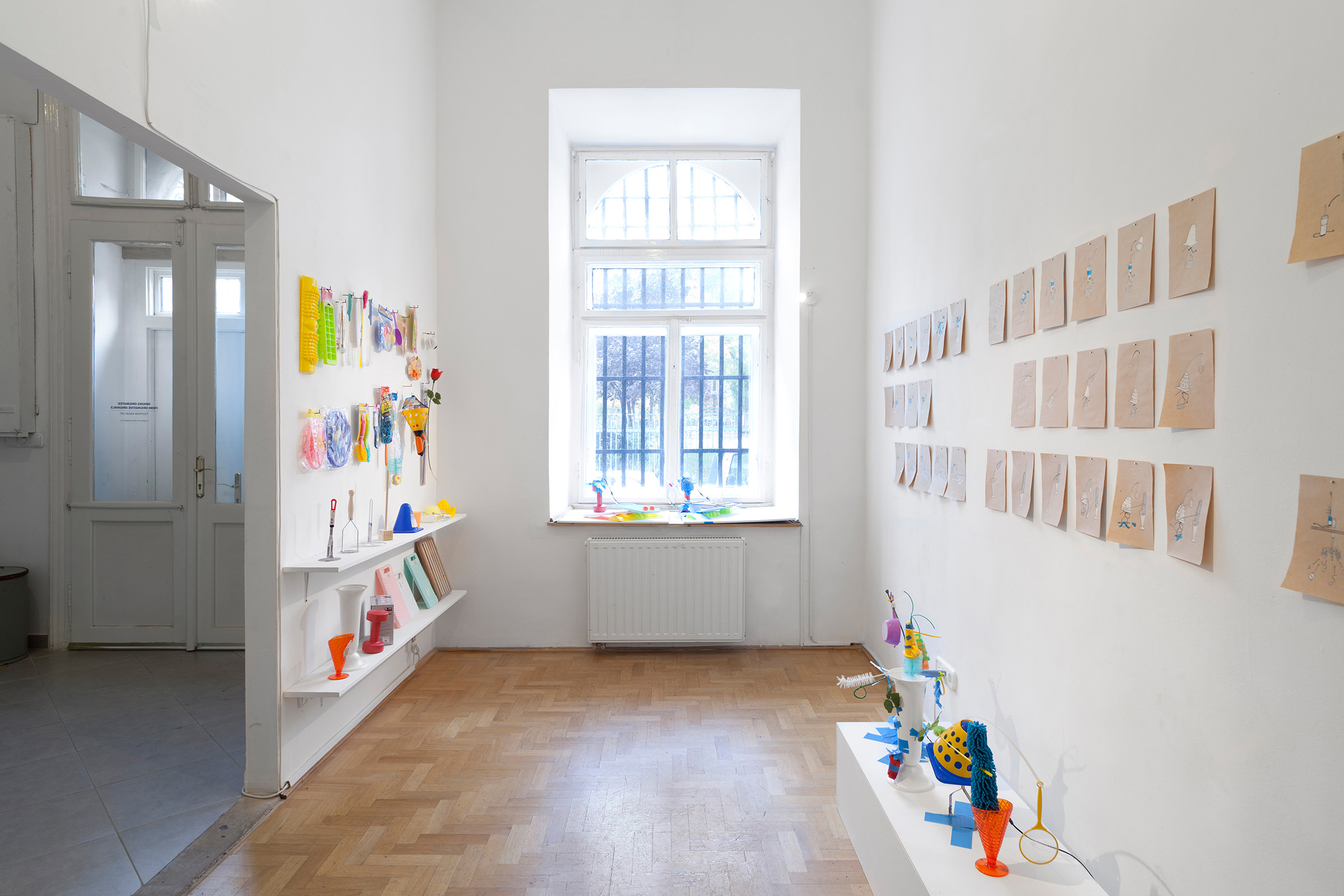Encounter with Doppelgänger
2014
Everyday items, motors, tapes, instruction, video, etc.
This project is a participatory kinetic installation guided by the instructions of Tsuyoshi Anzai. Anzai asked people in Budapest to make copies of his machine works by following his instructions. The participants interpreted the instructions on how to build the machines and reconstructed them using materials that they found in everyday life in Budapest.
Firstly, he built machines in Japan using everyday items and motors, and created the instructions on how to build them with drawings alone. Then, at the workshop in Budapest, the participants interpreted the instructions, went to buy everyday items for the components of the machines, and built the machines according to their own interpretations. This process enabled us to learn the participants’ subjective view and cultural background by looking at “the way they interpret the instructions”.
The instructions do not always clearly indicate which item it refers to. Also, in some countries, people may find some of the items unfamiliar. Despite some obstacles, they were able to figure out solutions on their own and finally completed the machines. In this way, the machines were reproduced through the process that was beyond the artist’s control. Are the duplicated machines merely copies of the originals? Anzai interprets the relationship between the duplicates and the originals as two originals being derived from the same origin. The title makes an analogy between “Doppelgänger” and the unique relationship of the two machines produced in two different countries.
この作品は、ブダペストの人々に安西の機械作品を再制作してもらうという作品です。彼らには、機械の作り方を示した指示書を解釈し、彼らの日常の中で手に入るものだけを使い機械を再制作してもらいました。
まず、安西が日本で手に入る日用品とモーターを組み合わせた機械を制作し、その機械の作り方をドローイングのみで示した指示書を制作します。 ブダペストでのワークショップでは参加者がその指示書を解釈し、その解釈を基づき現地での素材の調達、機械の制作をしました。 その結果得られた二つの可能性としての機械と、解釈された日用品とを、並列させるように展示しました。
この作品では、ワークショップ参加者の主観や文化背景が「指示書をどのように解釈し機械を作るか」という視点で切りとられています。指示書がどの日用品を指しているのか理解するのが難しかったり、そもそも他国では知られていない日用品であったりする場合もあります。 しかし、ワークショップの中で彼らは独自の解決策を見出し最終的に機械を作り上げることができました。このような、作家の意図を超えた再制作というプロセスを経て作られた複製品はしかし、単なるオリジナルに対するコピーに過ぎないのでしょうか?安西はこれを、起源を同じくするオリジナルが二つ存在している状態としてとらえ、それをドッペルゲンガーの現象になぞらえました。
